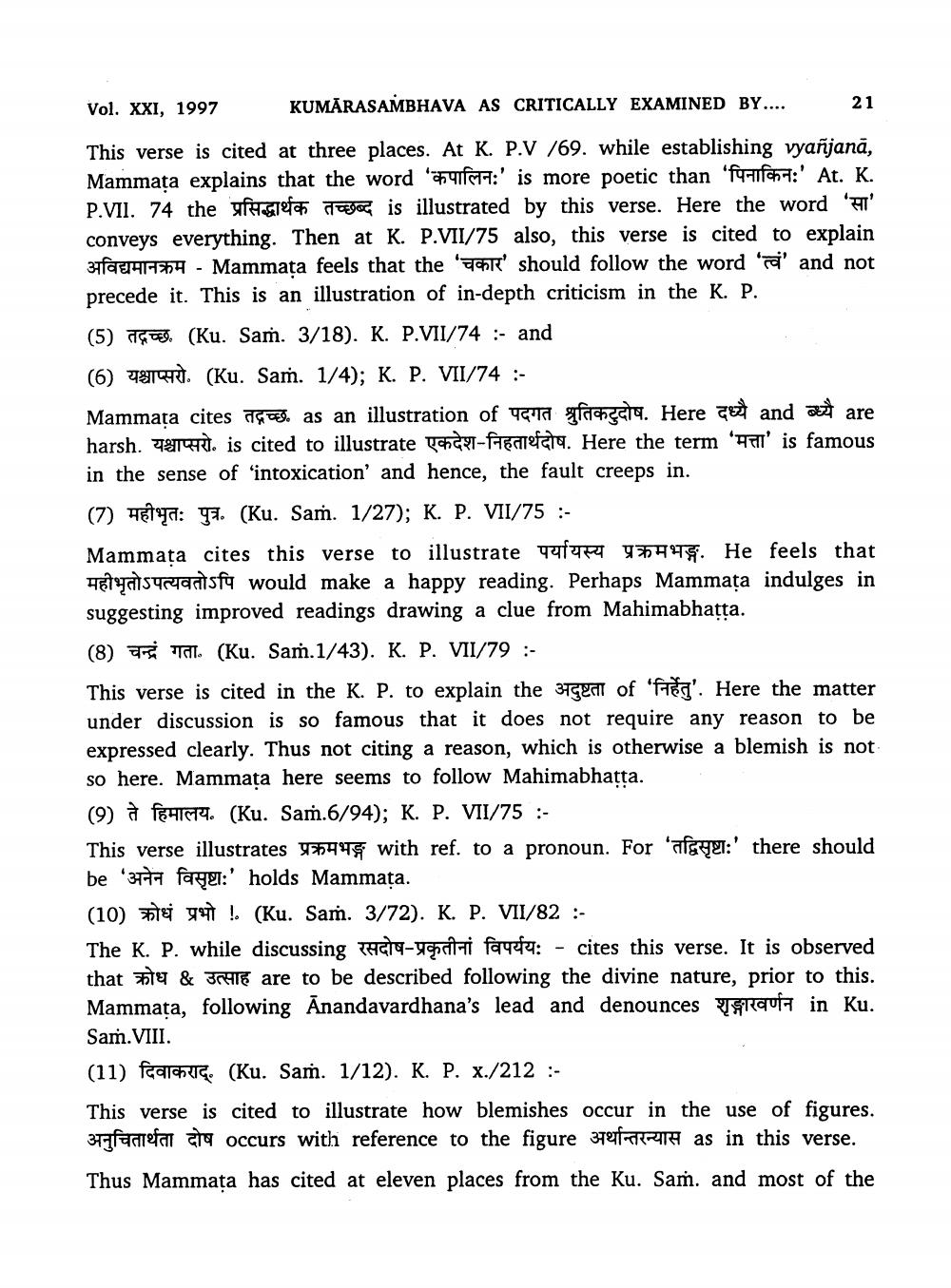________________
Vol. XXI, 1997
KUMĀRASAMBHAVA AS CRITICALLY EXAMINED BY....
21
This verse is cited at three places. At K. P.V /69. while establishing vyañjanā, Mammata explains that the word '4fsta:' is more poetic than fifcha:' At. K. P.VII. 74 the off stefa Moon is illustrated by this verse. Here the word 'F' conveys everything. Then at K. P.VII/75 also, this verse is cited to explain
अविद्यमानक्रम - Mammata feels that the 'चकार' should follow the word 'त्वं' and not precede it. This is an illustration of in-depth criticism in the K. P. (5) TGOED. (Ku. Sam. 3/18). K. P.VII/74 :- and (6 78994). (Ku. Sam. 1/4); K. P. VII/74 :Mammara cites तद्गच्छ. as an illustration of पदगत श्रतिकट्दोष. Here दध्यै and Kध्यै are harsh. यश्चाप्सरो. is cited to illustrate एकदेश-निहतार्थदोष. Here the term 'मत्ता' is famous in the sense of 'intoxication and hence, the fault creeps in. (7) Helya: F. (Ku. Sam. 1/27); K. P. VII/75 :Mammata cites this verse to illustrate youre 74976. He feels that HETYasuransfu would make a happy reading. Perhaps Mammata indulges in suggesting improved readings drawing a clue from Mahimabhatta. (8) ab . (Ku. Saṁ.1/43). K. P. VII/79 :This verse is cited in the K. P. to explain the 3TG2 of 'FEL'. Here the matter under discussion is so famous that it does not require any reason to be expressed clearly. Thus not citing a reason, which is otherwise a blemish is not so here. Mammata here seems to follow Mahimabhatta. (9) a fe4174. (Ku. Saṁ.6/94); K. P. VII/75 :This verse illustrates 45446 with ref. to a pronoun. For 'aferet:' there should be 3477 farget:' holds Mammața. (10) #e st! (Ku. Sam. 3/72). K. P. VII/82 :The K. P. while discussing (414-Yaciti faueta: - cites this verse. It is observed that Hy & 36416 are to be described following the divine nature, prior to this. Mammața, following Anandavardhana's lead and denounces srequis in Ku. Sam. VIII. (11) fcalcer. (Ku. Sam. 1/12). K. P. X./212 :This verse is cited to illustrate how blemishes occur in the use of figures. 377fanefami ata occurs with reference to the figure 379fTRIA as in this verse.
Thus Mammata has cited at eleven places from the Ku. Sam. and most of the




